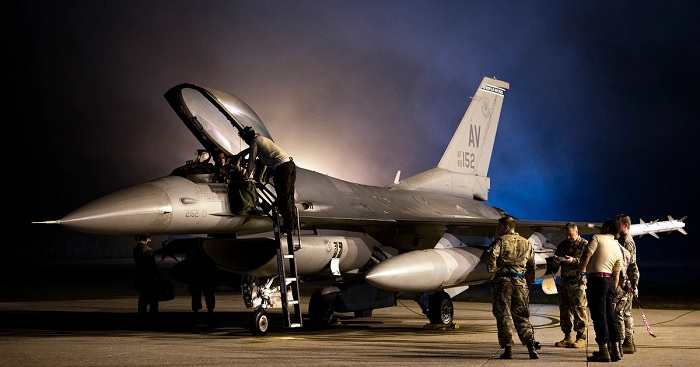
As the U.S. Air Force considers how to follow orders to move assets away from Germany, the head of U.S. Air Forces Europe is pledging a “deliberate” plan that includes transparency for both European allies and the military members involved.
Gen. Jeffrey Harrigian told reporters Monday that his team is still in the “planning stages” of the expected move, saying “we’re going to be deliberate about this. We want to make sure we get it right, such that there’s no impact to our ability to deliver the mission while we would be in transition.
“As we work through this, we want to make sure that we’ve got the appropriate facts understood and want to make sure that we remain closely aligned with our host-nation partners. keep them informed, remain transparent about all this, and acknowledge the fact that this is going to take some time,” he added.
In a July 29 announcement, Secretary of Defense Mark Esper announced the drawdown of almost 12,000 troops from Germany, along with the shifting of significant infrastructure. Under the plan, it is expected that one F-16 squadron, the 480th Fighter Squadron, would transfer from Spangdahlem Air Base in Germany to Aviano Air Base in Italy, which already hosts two F-16 squadrons. Meanwhile, KC-135 tankers from the 100th Air Refueling Wing and CV-22 Ospreys operated by the 352nd Special Operations Wing would remain at RAF Mildenhall, England, instead of transferring to Spangdahlem, as had previously been planned.
While Pentagon leaders such as Esper have cast the force movement as something designed to create a more flexible posture in Europe, critics have pointed to comments from President Donald Trump stating that the move is happening as political punishment for Berlin.
In his comments, Harrigian indicated that the planning for any potential shift is in the early days, with planners working out the details — with a focus on making sure there is no impact on operational capacity.
“The timeline’s still in work,” he said “We’ve got a fair amount of work in front of us to understand the necessary details required, as you can imagine, to move everything — from the jets but also all the other equipment associated with that — and then ensuring that, from an infrastructure perspective, we’ve got the requisite facilities located out at Aviano to be able to handle that.”
Harrigian noted, however, that on paper there could be benefits to shifting the F-16s to Aviano, saying there are some “synergies” to be had by adding the jets to a base already equipped with “some helicopters and the rescue squadron down there.”
“I think we have to balance that with location and how we would operate, but that’s all part of the analysis that we’re working through right now,” he said.
As to shifting assets to Mildenhall, Harrigian said that while he likes the idea of “flexibility with diversity of bases across Europe, relative to moving any airplanes around over there, we’re still thinking through that. I would tell you that there’s some more analysis we’ve got to do before making a final decision.”
Harrigian stressed that any move would be done in such a way that the military members and their families who are currently based in Germany would have plenty of advance notice of where they may be shifted.
“Most importantly to us, as we work through all this, is to make sure that as we refine and develop a plan, that we take our airman, their families into consideration and lay this out in a manner that we are very transparent about it, [so] they know what their future looks like,” he said. “We manage impacts to families, their kids, such that while we continue to deliver the mission, we also do this in a way that takes care of our most important equity, and that would be our airmen and their families.”
 Eurasia Press & News
Eurasia Press & News

